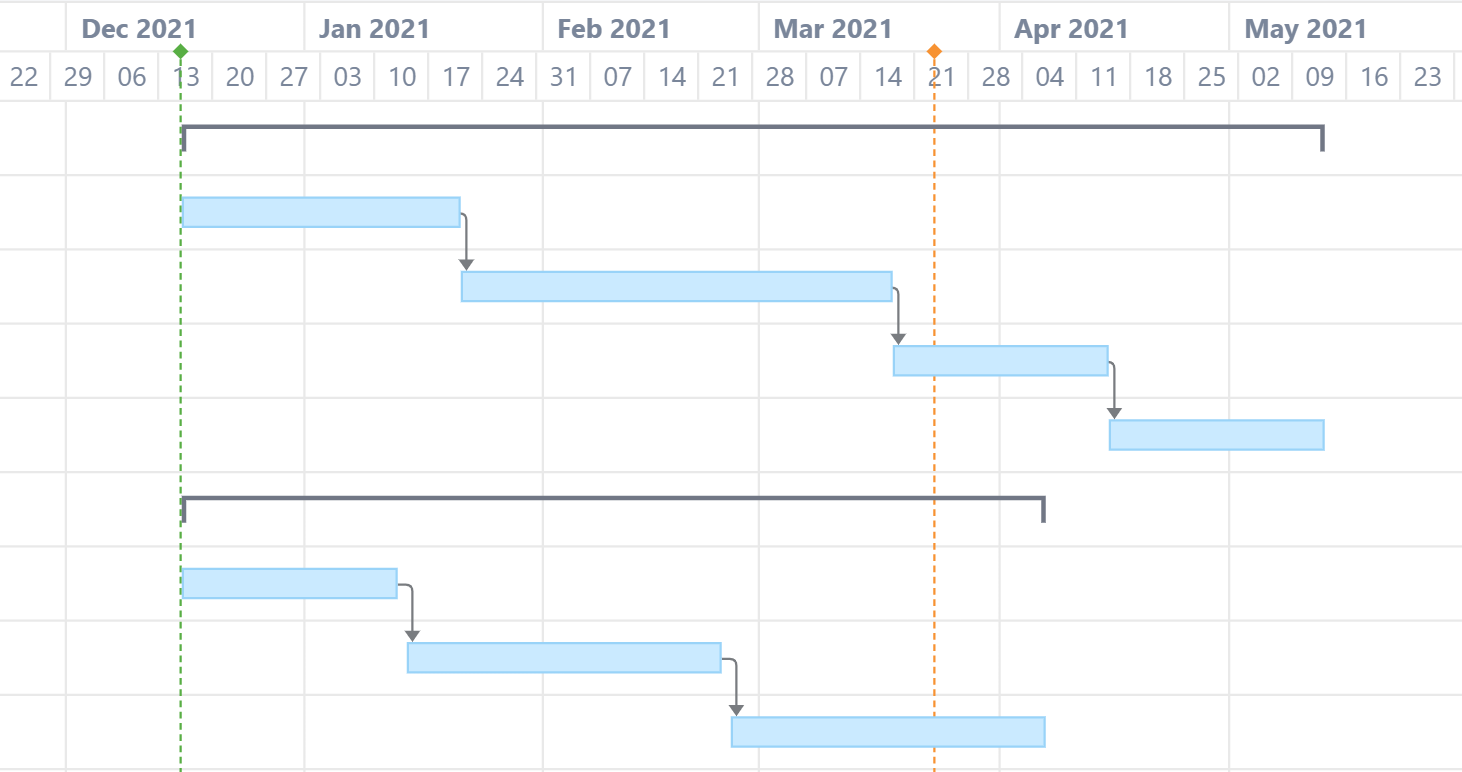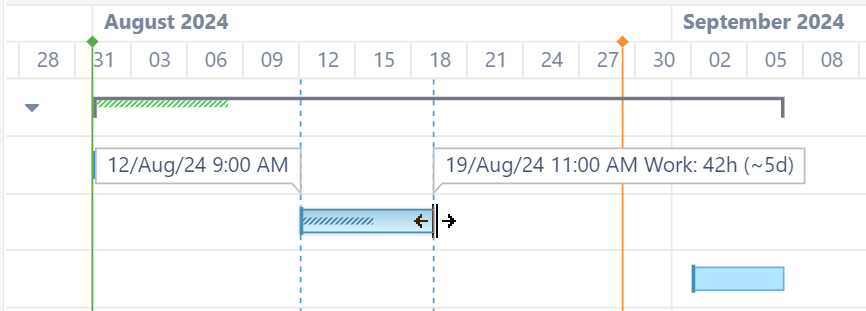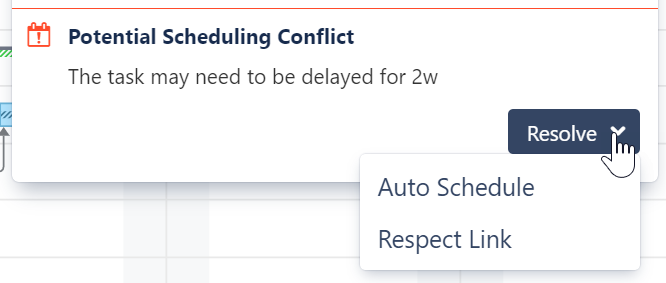The following guide will help you get started working with Gantt charts.
Scheduling Tasks
Tasks can be scheduled automatically or manually.
Automatic Scheduling
In this mode, tasks are automatically placed on the Gantt timeline based on your project start date, task estimates, predecessors, and dependencies:
-
Earliest tasks (tasks with no dependencies) are started on the project start date
-
Task lengths (and bar sizes) are estimated based on time tracking (by default)
-
If tasks are dependent on another task to start, they are scheduled accordingly, and those dependencies are illustrated in the chart

The rules for automatically scheduling can be customized in Settings | Scheduling.
Manual Scheduling
Manual scheduling allows you to schedule items based on the values in a Jira field or by dragging tasks across the timeline.

When you set a task's Start or Finish Date, it is considered to be scheduled manually. This means it will stay at the defined position regardless of its dependencies. If you remove the Start/Finish Date for a task, it will be automatically scheduled again.
If you aren’t able to edit the Start or Finish date in Structure or Gantt, make sure the field you’re using has been added to the appropriate work item screen.
For more information, see Scheduling Tasks.
Adjusting Task Duration
Task durations are calculated based on each task's work estimate, the Work Estimates Configuration, and the calendar.
To adjust a task's duration:
-
Edit the task's work estimate fields, or
-
Drag the side of the task bar.

For more information, see Adjusting Duration.
Dependencies
Dependencies are defined based on work item links. Changing dependencies within the Gantt chart creates or removes links between work items.

Creating Dependencies
To create a dependency between two tasks, drag from one task to another. The type of dependency you create will depend on the sides of each task you use:
-
Finish to Start - Drag from the right side of one task to the left side of the other
-
Finish to Finish - Drag from right side to right side
-
Start to Finish - Drag from left side to right side
-
Start to Start - Drag from left side to left side

Removing Dependencies
To remove a dependency:
-
Click the link arrow between two tasks to display the Dependency Properties
-
Click Remove

For more information about working with and configuring dependencies, see Dependencies.
Scheduling Conflicts
Scheduling conflicts are noted on the timeline. For example, for finish-to-start dependencies, if a task is manually scheduled for a date earlier than its predecessor's Finish Date, Gantt will flag this conflict.

To deal with the conflict, click the task and select one of the following actions:
-
Auto Schedule - This will switch the task to the Automatic Scheduling mode, clearing its Start Date or Finish Date and scheduling the task based on its predecessor and the dependency type.
-
Respect Link - This will change the task Start Date to coincide with the predecessor's Finish Date. The task will stay in the Manual Scheduling mode.

Next Steps
To learn more about working with Gantt charts, adjusting Gantt chart settings, or using advanced features like resources, milestones, and baselines, check out our User's Guide.
